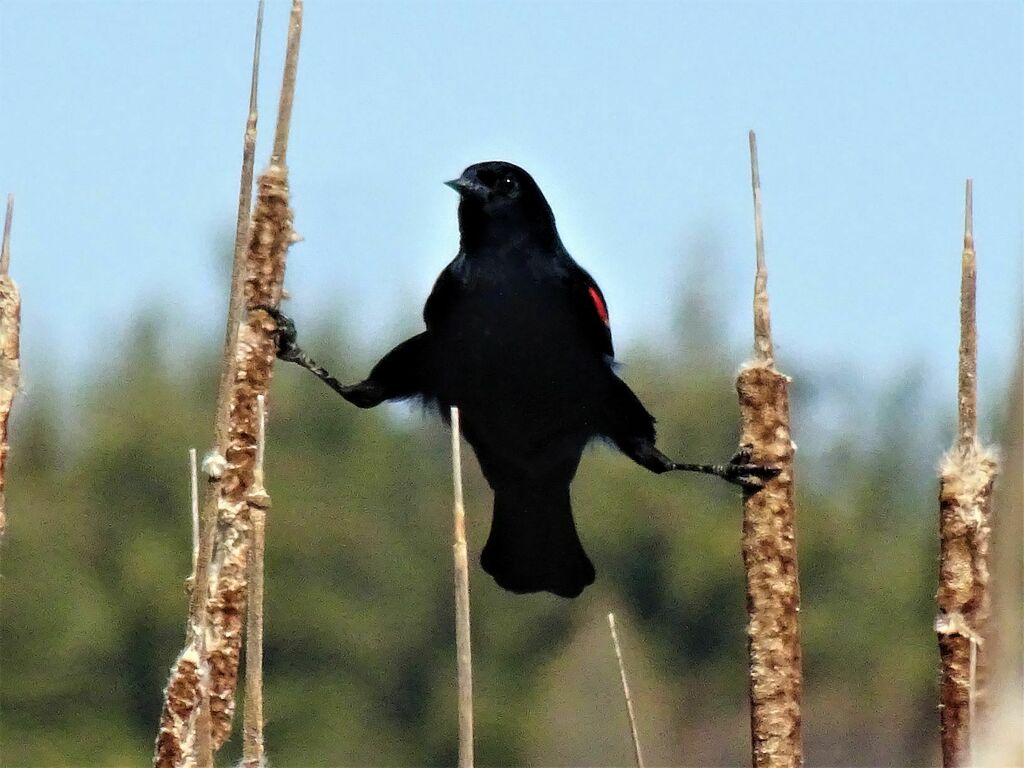Featured Observation: Northern Pintail
This week’s featured observation is a Northern pintail, observed by @naturenickpics in Edmonton, AB
Northern Pintail populations in North America are considerably lower than they were in the early 1970s. Research by Ducks Unlimited Canada’s Institute for Wetland and Waterfowl Research (IWWR) has shown that increased agriculture has been associated with declining productivity of pintails . Additional work has shown this trend extends to other prairie breeding dabbling ducks, in addition to pintails.
Current research being led by IWWR, in collaboration with partners at ABMI, Innotech Alberta, the University of Alberta, and University of Saskatchewan, is collecting data on duck productivity and two specific details on the health of their habitat: food (invertebrate availability) and water quality. This data is collected at wetlands across a gradient of agricultural landcover from native grassland to completely cropped.
What can be done to support waterfowl in agricultural landscapes? DUC’s Conservation Programs and partnerships with the agricultural community help reduce the impacts of changing land use on pintail and other duck species.
Programs include:
- Encouraging the use of winter wheat to improves nesting cover for Northern Pintail
Marginal areas programs that incentivize the seeding of forage in poorly producing areas.
Forage provides additional nesting cover, and delayed haying, which provides opportunity for nests to hatch prior to the first cut- Other examples of DUC programs that benefit ducks are available on our website
Observation en vedette: Canard pilet

L'observation de cette semaine est un Canard pilet, observé par @naturenickpics à Edmonton, AB.
Les populations de canards pilets en Amérique du Nord sont considérablement plus faibles qu'elles ne l'étaient au début des années 1970. Les recherches menées par l'Institut de recherche sur les milieux humides et la sauvagine (IWWR) de Canards Illimités Canada ont montré que l'augmentation de l'agriculture a été associée à une baisse de la productivité des canards pilets.
D'autres travaux ont montré que cette tendance s'étend à d'autres canards barboteurs nicheurs des prairies, en plus des canards pilets. Les recherches actuelles menées par l'IWWR, en collaboration avec des partenaires de l'ABMI, d'Innotech Alberta, de l'Université de l'Alberta et de l'Université de la Saskatchewan, recueillent des données sur la productivité des canards et deux détails spécifiques sur la santé de leur habitat : la nourriture (disponibilité des invertébrés) et la qualité de l'eau. Ces données sont recueillies dans des milieux humides situés sur un gradient de couverture agricole allant de la prairie indigène à la culture complète.
Les programmes de conservation de CIC et les partenariats avec la communauté agricole aident à réduire les impacts des changements d'utilisation des terres sur le canard pilet et d'autres espèces de canards.
Les programmes comprennent
- Encourager l'utilisation du blé d'hiver pour améliorer la couverture de nidification du canard pilet
- Programmes pour les zones marginales qui encouragent l'ensemencement de fourrage dans les zones peu productives. Le fourrage fournit une couverture de nidification supplémentaire et retarde la fenaison, ce qui permet aux nids d'éclore avant la première coupe
- D'autres exemples de programmes CIC en faveur des canards sont disponibles sur notre site web













 Why do some ducks stay north in winter?
Why do some ducks stay north in winter?


